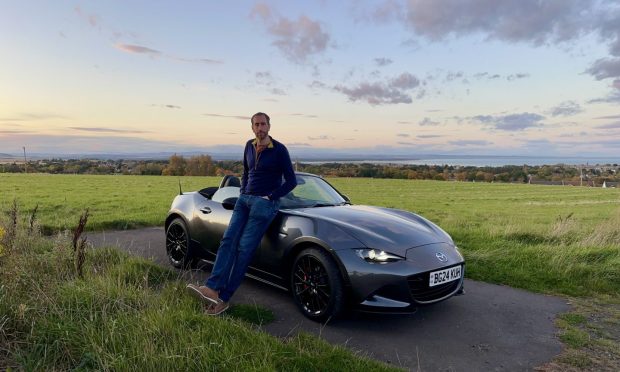Range Rover has introduced a plug-in hybrid option to its trendy and popular Evoque.
Called the Evoque P300e, the new power plant marries a 1.5 litre 200bhp petrol engine with a 109bhp electric motor.
It will do up to 34 miles on battery power alone, meaning the majority of commutes can be completed without taking a sip of petrol.
CO2 emissions are just 44g/km, so the Evoque P300e falls into the 10% Benefit-in-Kind braket, making it an appealing option for company car buyers. Prices start at £43,850.
Jaguar Land Rover brought a range of their cars up to Pitlochry for Scottish motoring journalists to try out.
I spent a couple of hours exploring Highland Perthshire in the Evoque P300e.

The first thing I noticed is it’s fast. Put your foot down and petrol and electric power work together to produce more than 300bhp.
That gets the Range Rover Evoque from 0-62mph in an – excuse the pun – electrifying 6.1 seconds. It can also sit at up to 84mph on electric power alone.
Eight speed automatic transmission means progress through the gears is seamless.
Choice of modes
As standard the car operates in hybrid mode, choosing for itself whether to use petrol or electric power. Switch it to EV mode and it will run on electric alone until the battery is empty.
Save mode, meanwhile, uses the petrol engine while maintaining the battery’s charge. It’s useful for long journeys, where petrol power can be used on the motorway and the battery kept for urban driving nearer to your destination.
I completed a loop around Loch Tummel and a short stretch along the A9. When I got back to base the battery still had around 10 miles of range in it.

The battery can be charged from empty to 80% in just 30 minutes using a 32kW charger.
The Range Rover Evoque has a nice balance between body control and ride quality, and refinement is excellent at higher speeds. It’s more capable off road than any of its peers.
Inside, an excellent new infotainment system called Pivi Pro, is the centrepiece of a high-quality interior.
Able to do most journeys on its battery, but with petrol power for longer journeys the Evoque P300e is the best of both worlds.










